Copyright 2020 - 2021 irantour.tours all right reserved
Designed by Behsazanhost
Religious Symbols in Iranian Architecture
Religious Symbols in Iranian Architecture
By Roghieh Sumani
Since humankind has known himself, he has been in pursuit of perfection and the creation of beauty. Even in the very early man-made handicrafts, and ceramic dishes, his effort in making symmetrical forms, and creating beautiful colors and harmony are witnessed. Gradually, the man tried to develop this beauty in various fields by building his house and creating forms and spaces that despite being primitive, had harmony, practical and beautiful relations.
Among the lands that still possess signs of ancient life, the Iranian Plateau is in excellent condition. All across the west Parthia, various sects of religions, and Semitic deities were popular. Primitive religions, worship of mountains, waters, rivers, lakes, trees, and rocks, especially those called baetyl by Greeks, were so common.
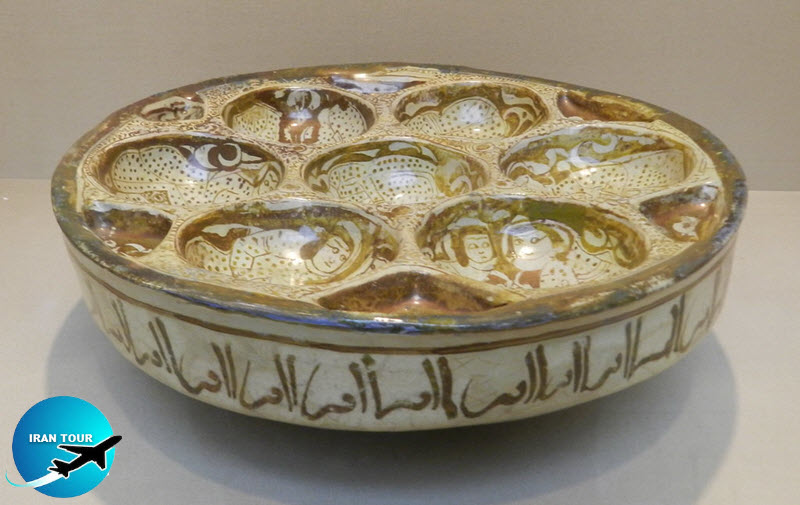 |
| A Ceramic object- Glassware & Ceramic Museum |
The diversity in the religious architecture of Parthians reflects the multiplicity of religions in the mentioned era, When Parthians were in company with Sakas, they worshipped the sun, moon, and stars. Then after becoming the companions of the Persians and Medes, they worshipped Ahura Mazda. Since the worship of Mehr and Nahid was common in Iran, Parthians embraced them as well. By the time Alexander entered Iran, the worship of some other deities and their Greek versions became a part of the Parthian kings' religion. The tiny sculptures discovered in west Iran are evidence of these deities. Along with these changes, some developments also took place in architecture. The porch, which is one of the architectural elements of Parthians, makes the connection between some parts of the building. It is also a suitable space for using exterior decorations. With the spread of plaster and lime, the roof building reached its peak in Parthian architecture, and it was raised over the porches like a crown. The earring-like roof was the first step to the Sasanids' dome building and the application of decoration and plastering served as the basis for tile making, which later became an art form in which Iranians take pride.
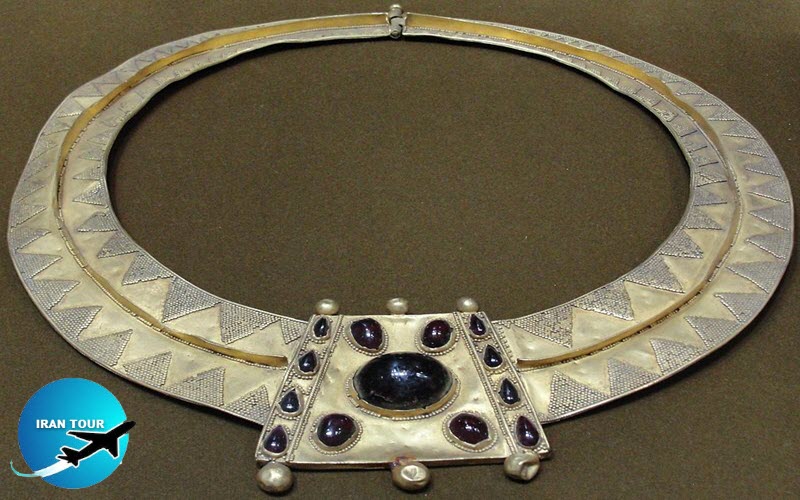 |
| Parthian golden necklace- Iran National museum |
Zoroastrian temples were built in a four-roof manner. With the emergence of Islam and the making of some slight changes, temples turned into mosques. In this way, the brazier was removed and the four-roof was changed to an altar. Then, the application of the Islamic art decorations gave a new attractiveness to the structure. As a matter of fact, decorations played a crucial role in Iranian architecture before and after the emergence of Islam. The study of decorative techniques and methods in different eras reveals the purpose of using decorations. In Achaemenian Era, for instance, decorations served as the demonstration of Achacmenian kings' strength and power (as it is witnessed in Persepolis). Application of capitals in the form of bullheads in this era, not only had a decorative aspect but also had structural use for supporting the roof beams. Nevertheless, the sanctity of the bull as an animal reflects also the ideologically totemic base of this illustration.
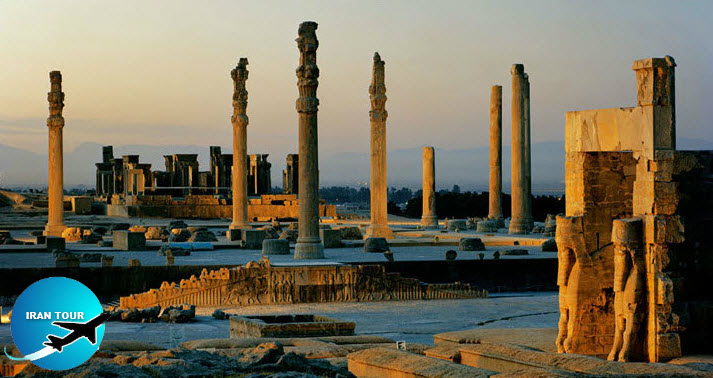 |
Furthermore, the forms of plants such as cypress trees on Persepolis stony walls are a testimony to the ancient Iranians' respect and attention to the surrounding nature. This kind of symbolic application of nature underwent a new aspect after the emergence of Islam, and it was used for focusing man's attention on the Almighty. These decorative elements enjoyed a structural function before Islam. Likewise, they were still in use after Islam and functioned in accord with other elements of the building. In Islamic design, especially in architecture, decoration is the most fundamental unifying element. A certain type of decoration is not necessarily used for a certain type of structure or subject. On the contrary, there is a theoretical principle behind decoration including the art of whole subjects in the Islamic world. This principle is functional for all buildings and objects at all times. In Islam, consequently, a close relationship ship is established between architecture and the dependent arts.
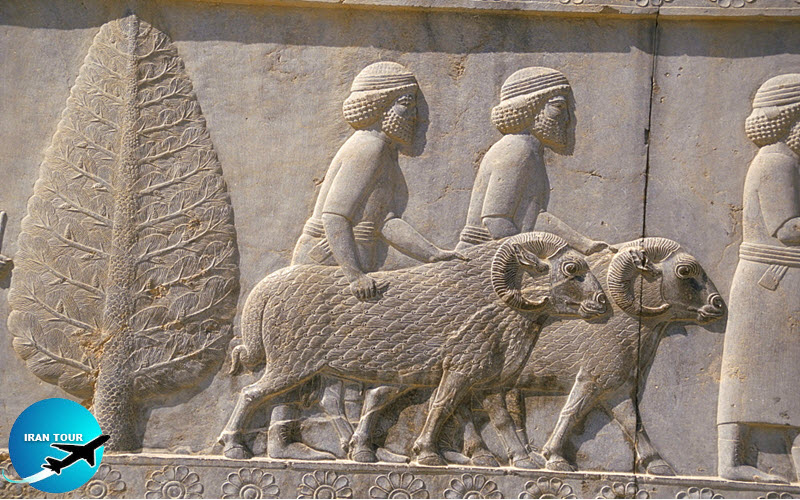 |
Iranian art has always been decorative in every form. The arts called "minor" in the West have enjoyed special consideration in Iran and have reached the level of major arts. In Iranian architecture, the interest in decorative surfaces equals the interest in constructional forms. One of the principles observed in the art of the Islamic world is the functionality of art. In fact, Islamic artists do not believe in "art for art's sake", and this doctrine has always been witnessed in Iranian architecture, even before the emergence of Islam. The flow and naturalness of space are some of the characteristics of Islamic designs. Since very little furniture and decoration is considered for daily Islamic life, these decorations appeared in the form of layers on the ceilings, floors, and walls. The complexity of the artistic effects in these layers and decorative surfaces would be enriched by utilizing carpets and cushions, which usually have a close relation with decorative designs on the walls and ceilings. Sometimes, the design of plants and nature is applied to provide a natural setting. In Etemad Al-Doleh's tomb, for instance, there is a carved marbled floor that closely resembles the contemporary carpets of the construction and seems to remind one of nature.
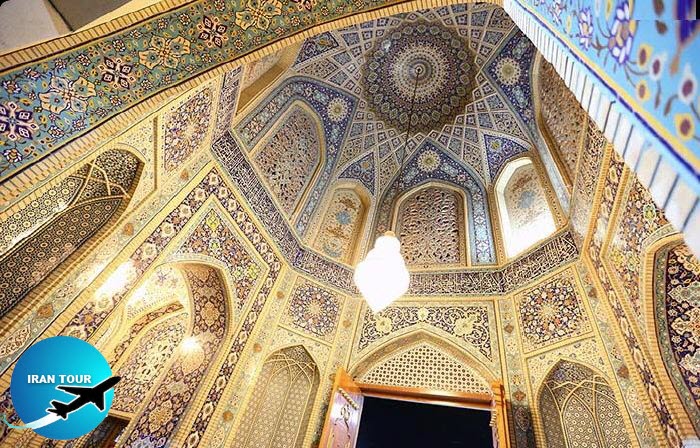 |
| Shah e Cheragh or Lord of the light - Shiraz |
Emphasis on the oneness and uniqueness of God in whole elements and objects is the other characteristic of Islamic architecture, which includes not only the domes and minarets but also tiling details. An effect of the principle of metaphysical oneness is the spiritual importance of empty spaces. The basis of oneness is revealed in the term of martyrdom, i.e. La Ilaha Illa Allah = There is no god (Ilah) but God (Allah)). If objects were defined by their common concept, then vacancy, i.e. being empty space of the objects, would be the epitome of God's immanence. The application of empty spaces in Islamic architecture is a technique for presenting Ciod's oneness. Regarding the brief account of Islamic art and its architectural characteristics, decorative elements in Islamic architecture are now discussed:
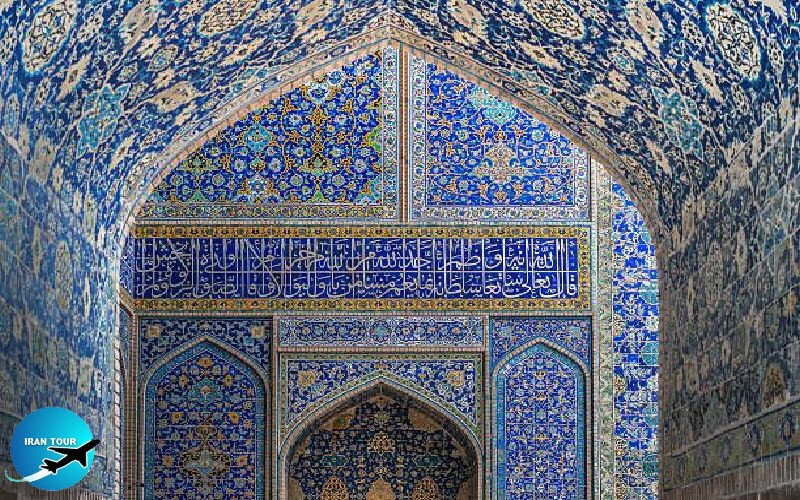 |
Calligraphy
Calligraphy is considered one of the most important Islamic decorative arts since it plays an important role in inscribing the name of God. Almost all the Islamic constructions enjoy some sort of carving on stone, plaster, marble, or mosaic surfaces and there may be some verses from the Quran or different names of God. Calligraphy has a close relationship with geometry. Sometimes single words such as Allah or Mohammad are repeated on a wall surface in particular geometric forms and structures.
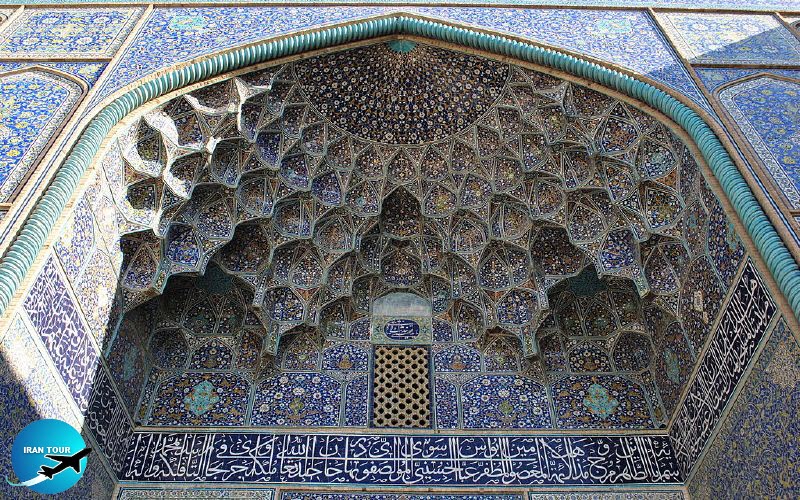 |
Geometry
In Islamic art and architecture, geometry is of special importance and conveys a particular concept. With their special abilities, Islamic artists have developed geometric forms; to the extent that they have come up with some complex ones. These complex forms arc a testimony to the artists' interest in creating symmetric and fractured forms repeated in a circle, as witnessed in the creatures' cycle of life. Meanwhile, the mentioned geometry creates visual balance, unity, and order between the positive and negative settings. The vaulted cornice is one of the geometric shapes with wide use in Islamic constructions. The application of vaulted cornice, especially on the mosque portal, not only adds to a decorative style by refracting and reflecting the light and creating shading but also supports the weight of the construction. By changing the colors and light, these designs create an illusion of patterns different from the real ones.
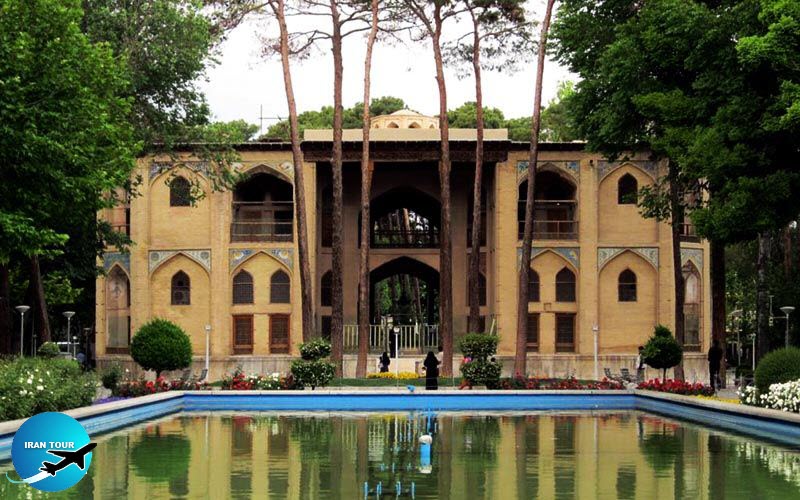 |
Nature
Admiration for nature has deep cultural roots in Iran's architecture, Nonetheless, the infinite allusions of the holy book to plants, light, and items in nature resulted in the multi-faceted presence of nature in Islamic architecture, Islamic artists recreate nature with high precision and apply flowers and trees as decorative motifs in objects and constructions. In the Islamic style of tiling, plants are geometrically drawn as long stems from which other plants branch off gradually. The new stems create other symmetrical and polyphyllous stems, which after multiple divergences, reunite and go back to the main stem. This boundless and rhythmic motive frequency, which is defined by the repetition of curved lines, creates a balanced and free pattern. We could now understand the effects of three-dimensional spaces made by changes in thickness, color, and pattern. An outstanding example of unity between architecture and nature is witnessed in the Hasht Behesht structure. Whenever you pass across different surfaces on this structure, you feel, from different angles, nature and a part of the sky beside you.
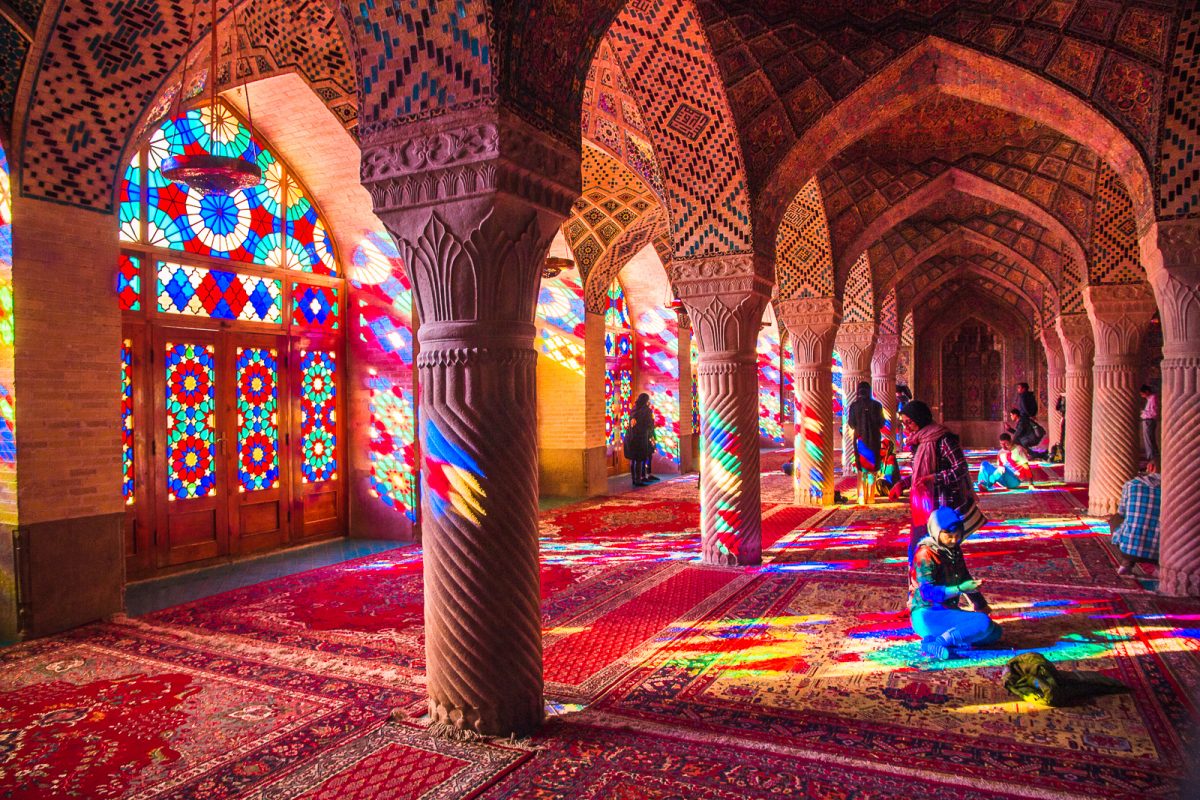 |
| Nasir Ol Molk Mosque Shiraz |
Light
For many Muslims, light is the symbol of the Almighty's oneness. Asa decorative element in Islamic architecture, light creates new patterns by embellishing the other elements or creating different shapes. It also adds a dynamic quality to the architecture by creating the illusion of forms and shapes continuing and merging into each other. Nonetheless, the combination of light and shade creates sharp contrasts, especially in brick-like patterns.
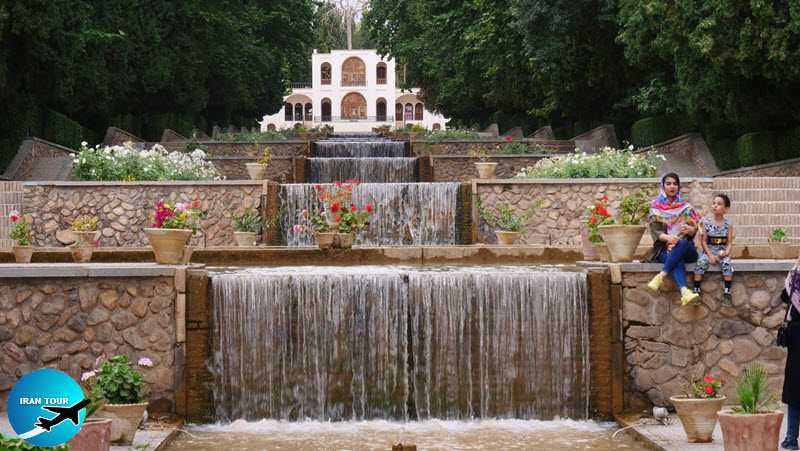 |
| Shahzade garden - Mahan - Kerman |
Water
In the Islamic regions with hot weather, the water in the small swimming pools of the central yard and its fountains has two qualities of chilling and decorating. The water not only reflects the architecture like a mirror but is also an emphasis on a visual axis. In "Bagh Shazdeh" located in Kerman province, for instance, the visual axis that leads to the royal structure in the garden is highlighted by water. Before inexperienced Western eyes, Islamic decorations may look tasteless and ineffective. However, studying the Islamic decorations in different regions and among various peoples demonstrates that Islamic decorative art is practical and at the service of function, just as much as other forms of Islamic art. The most important aspect of decorative art in Islamic architecture is that decorations are not created for their own sake, but are there to decorate the structures so that art is applied in pursuit of the perfection of mankind (for whom the decorations are designed).
- Details
- Category: IRAN Blog